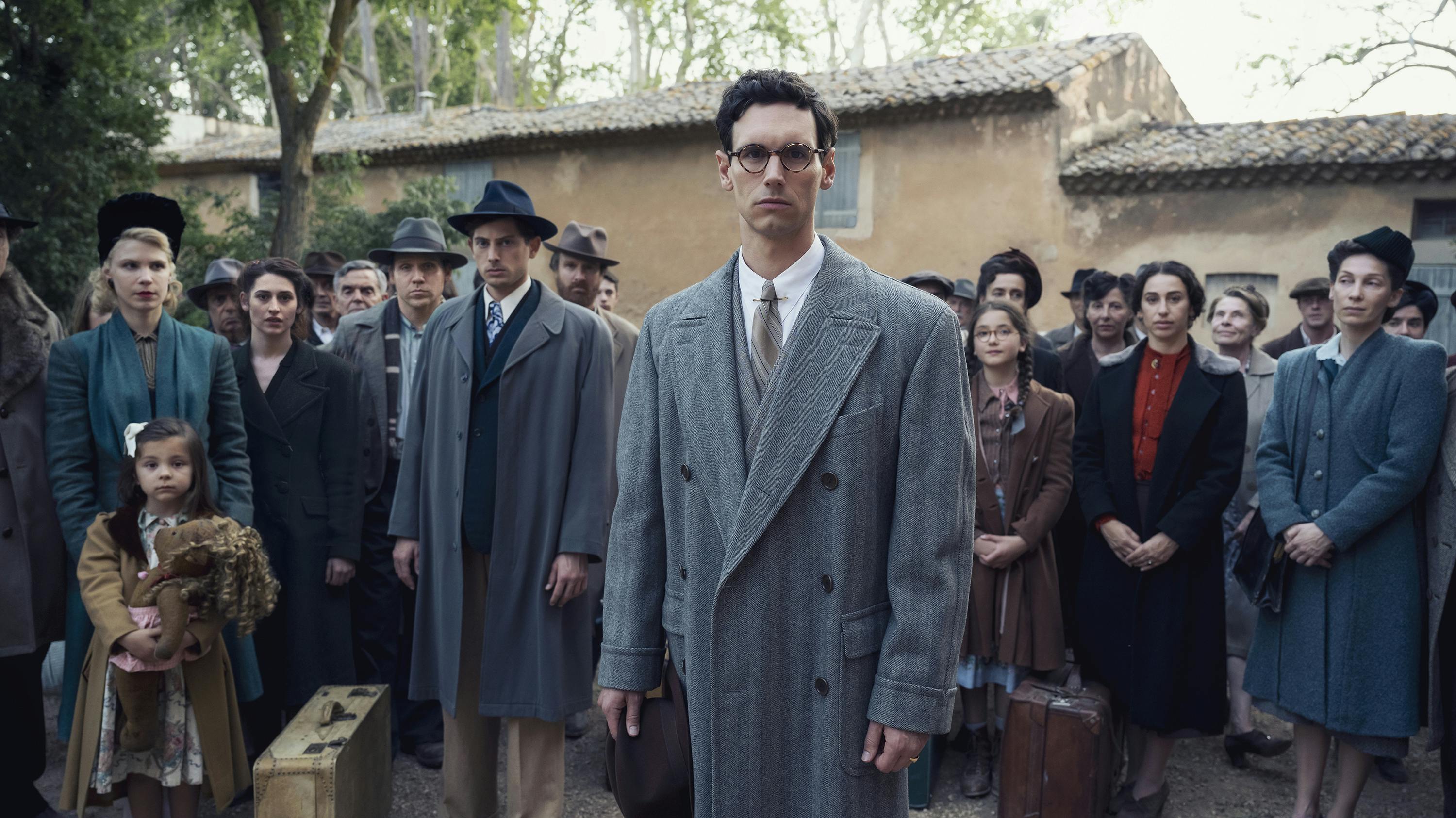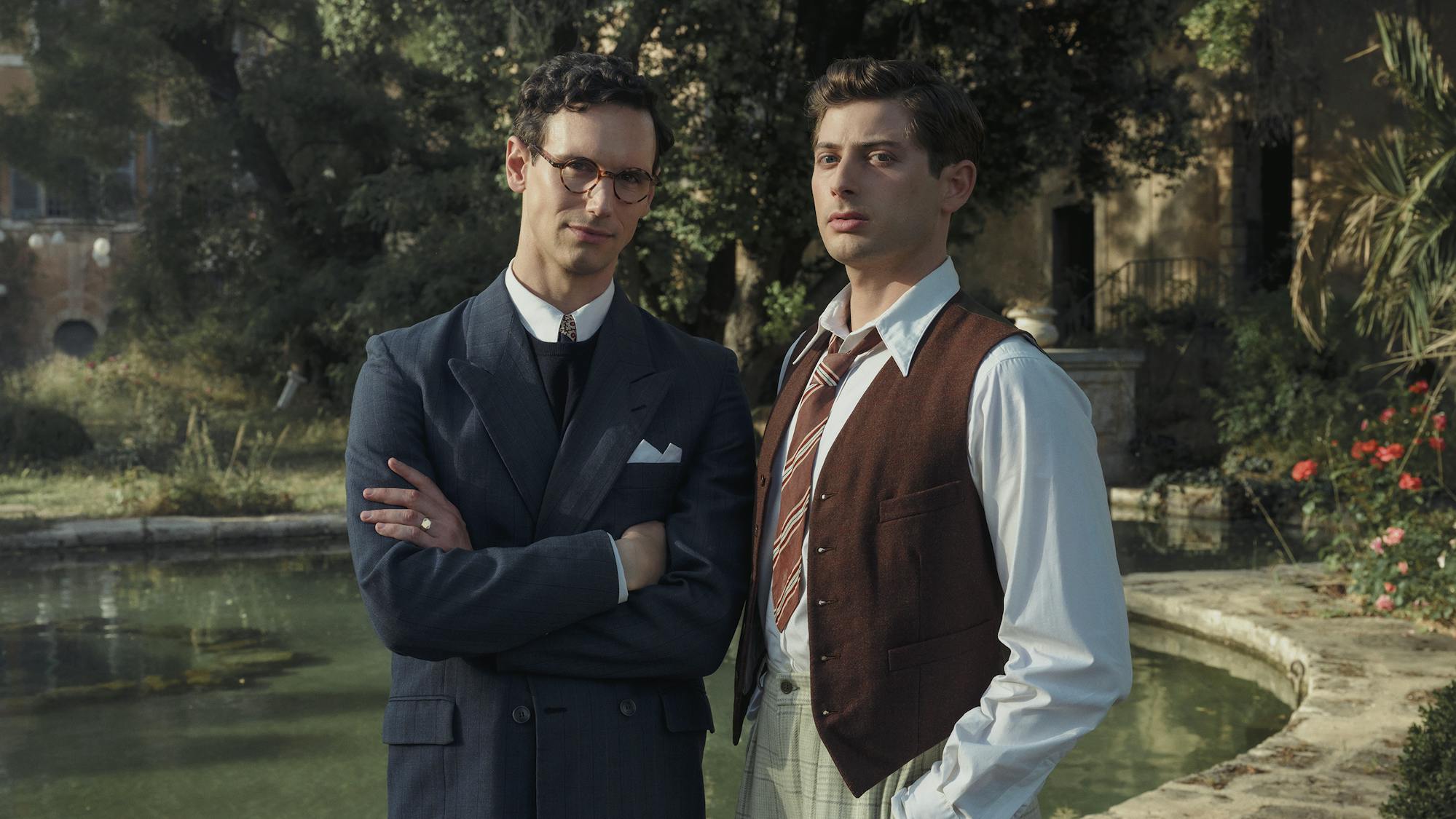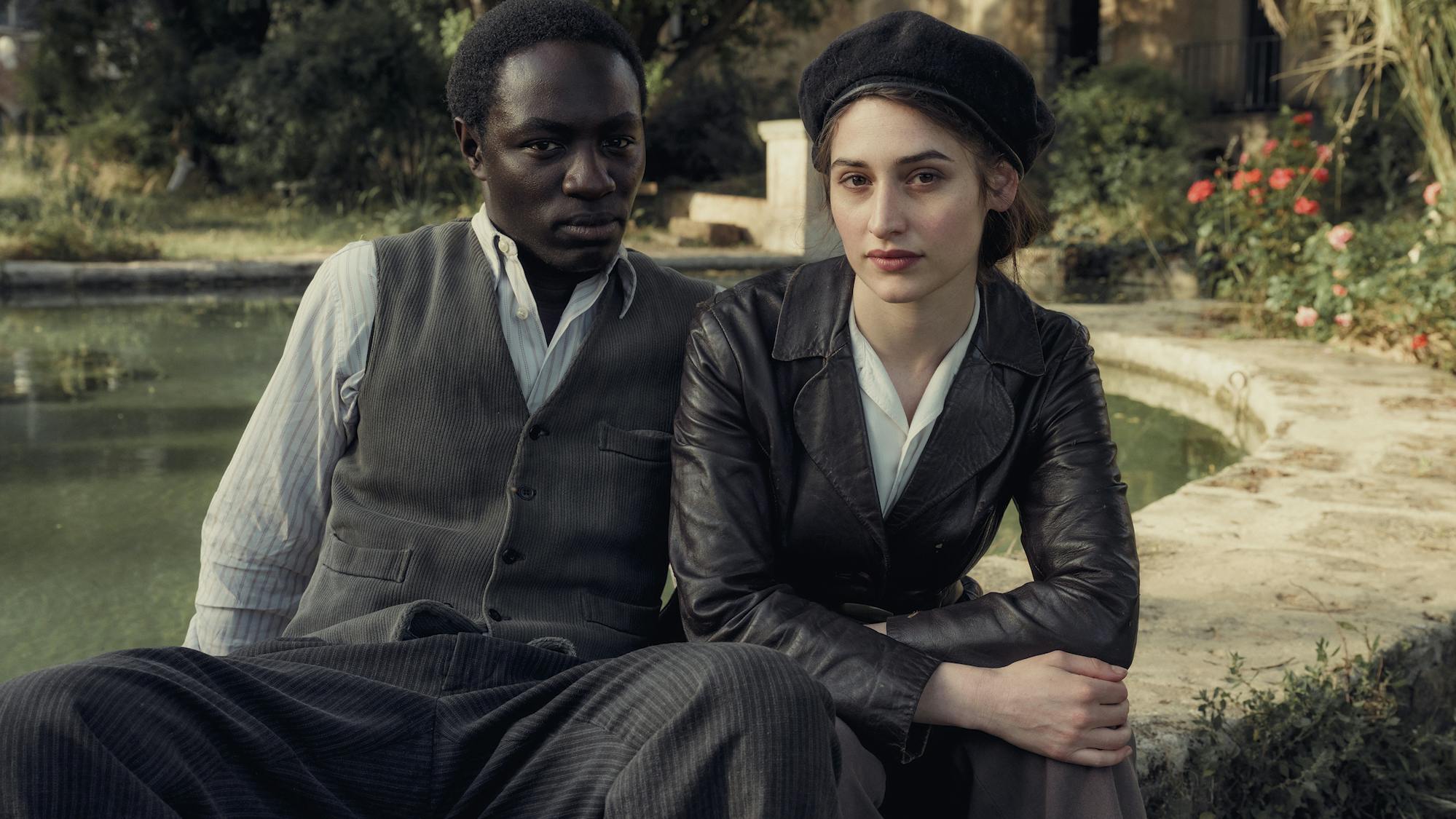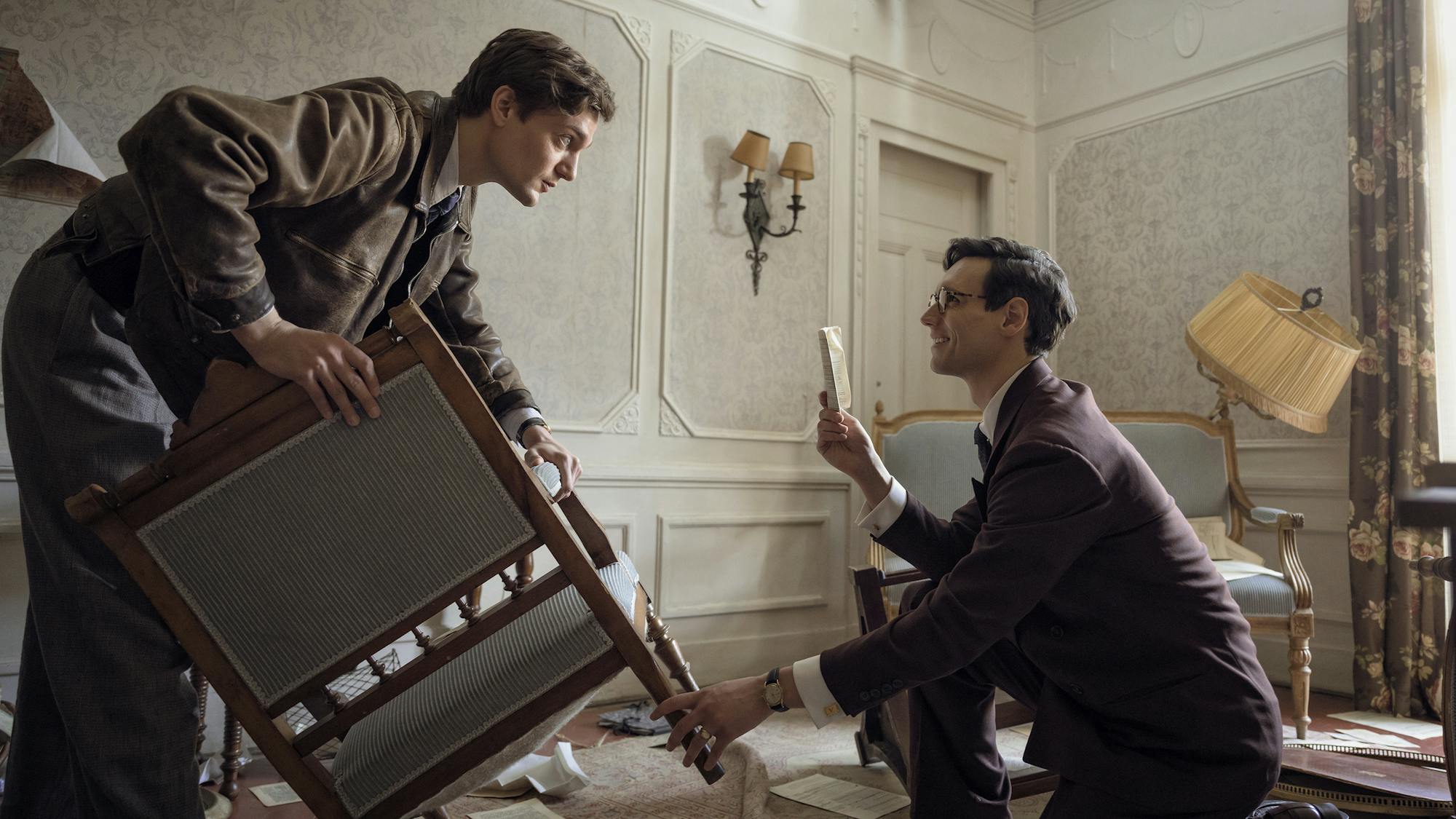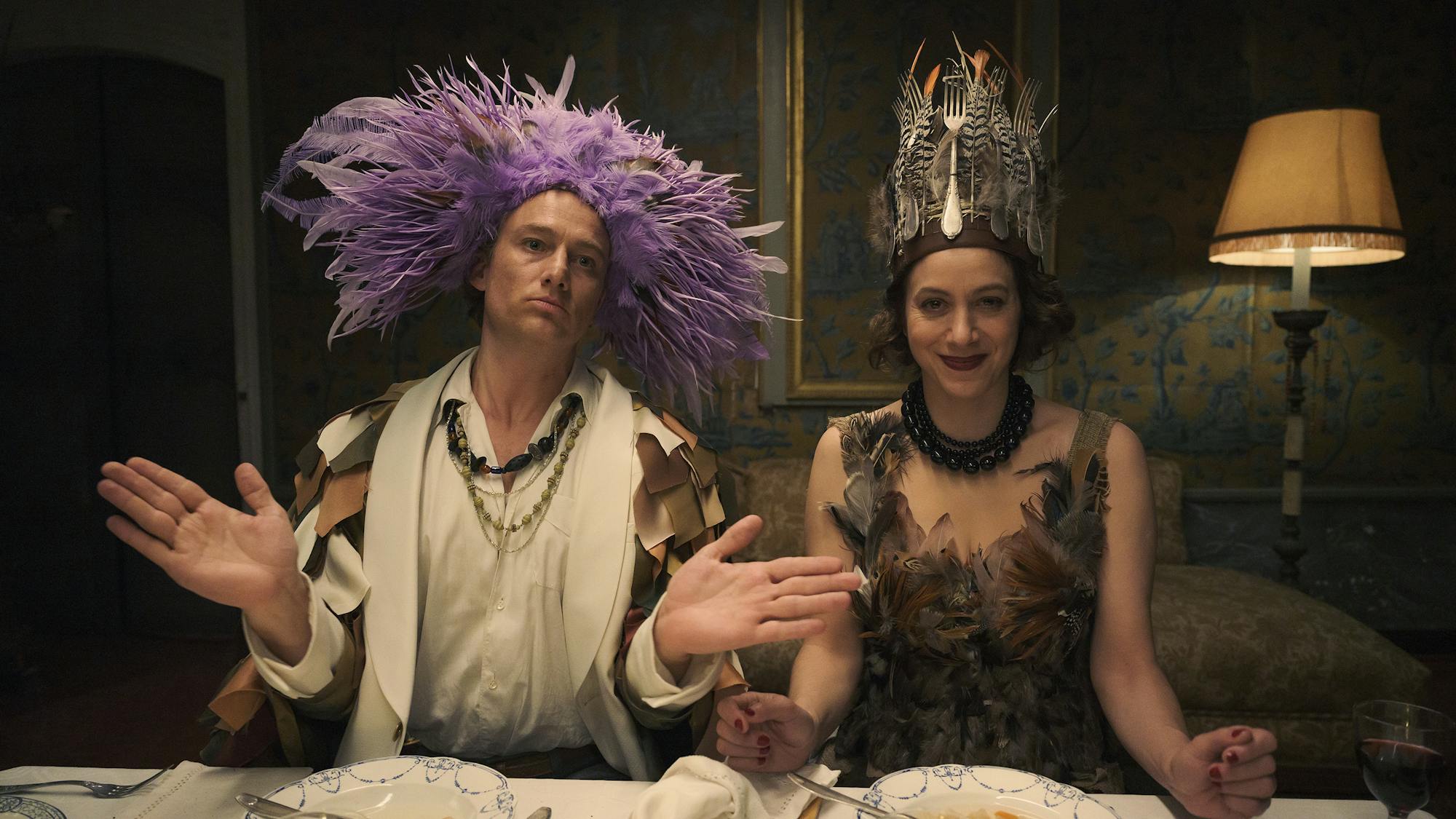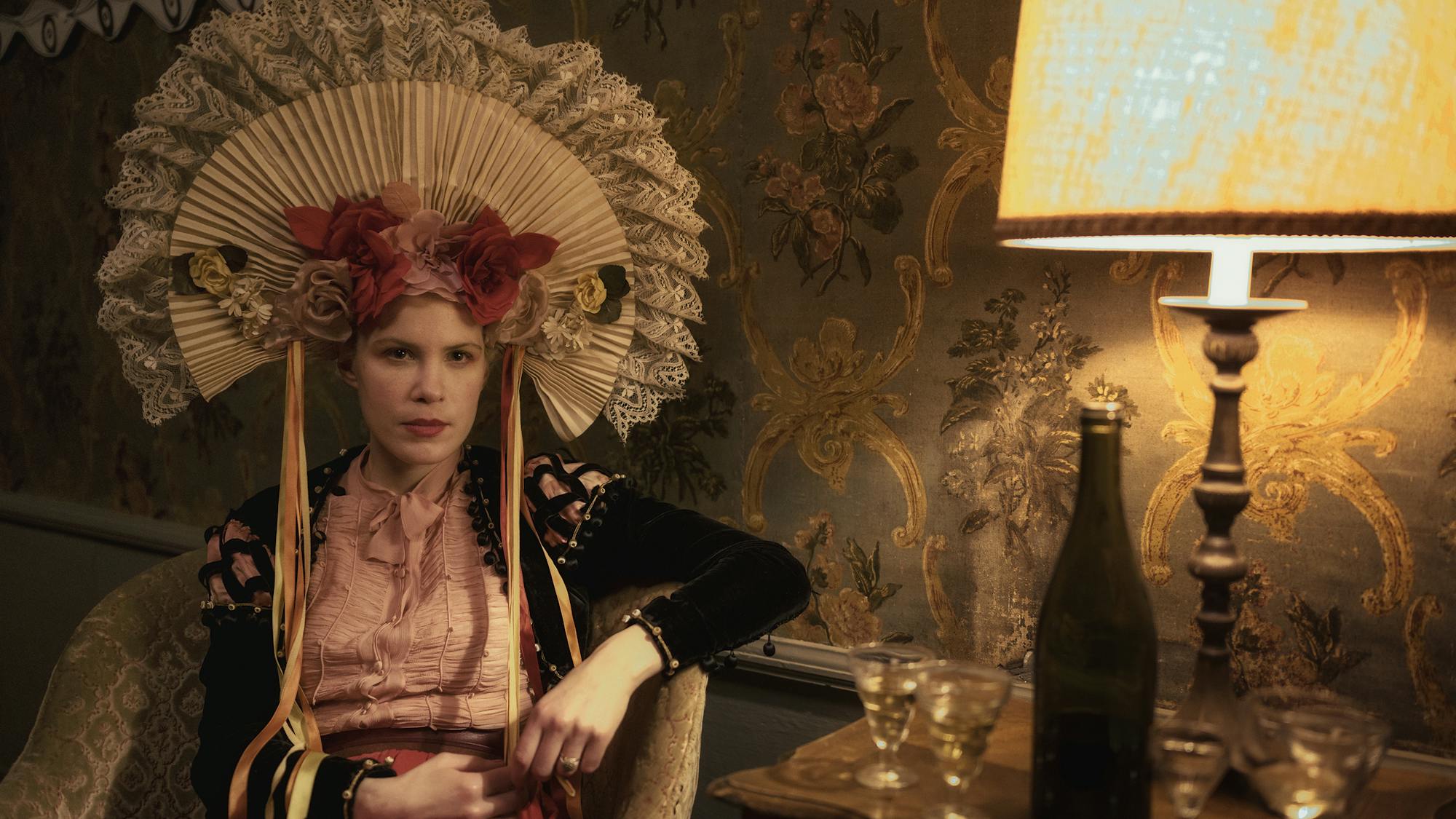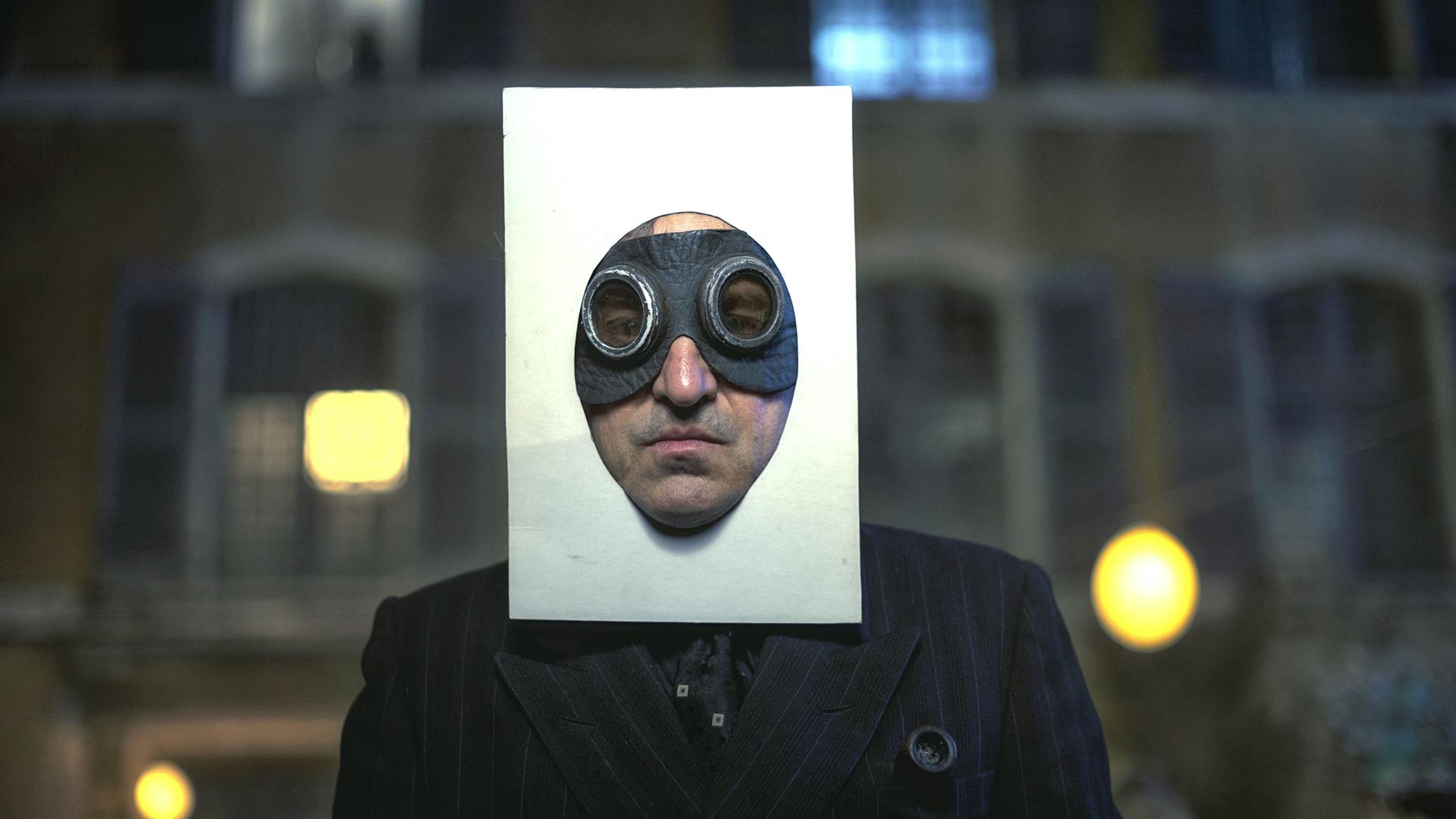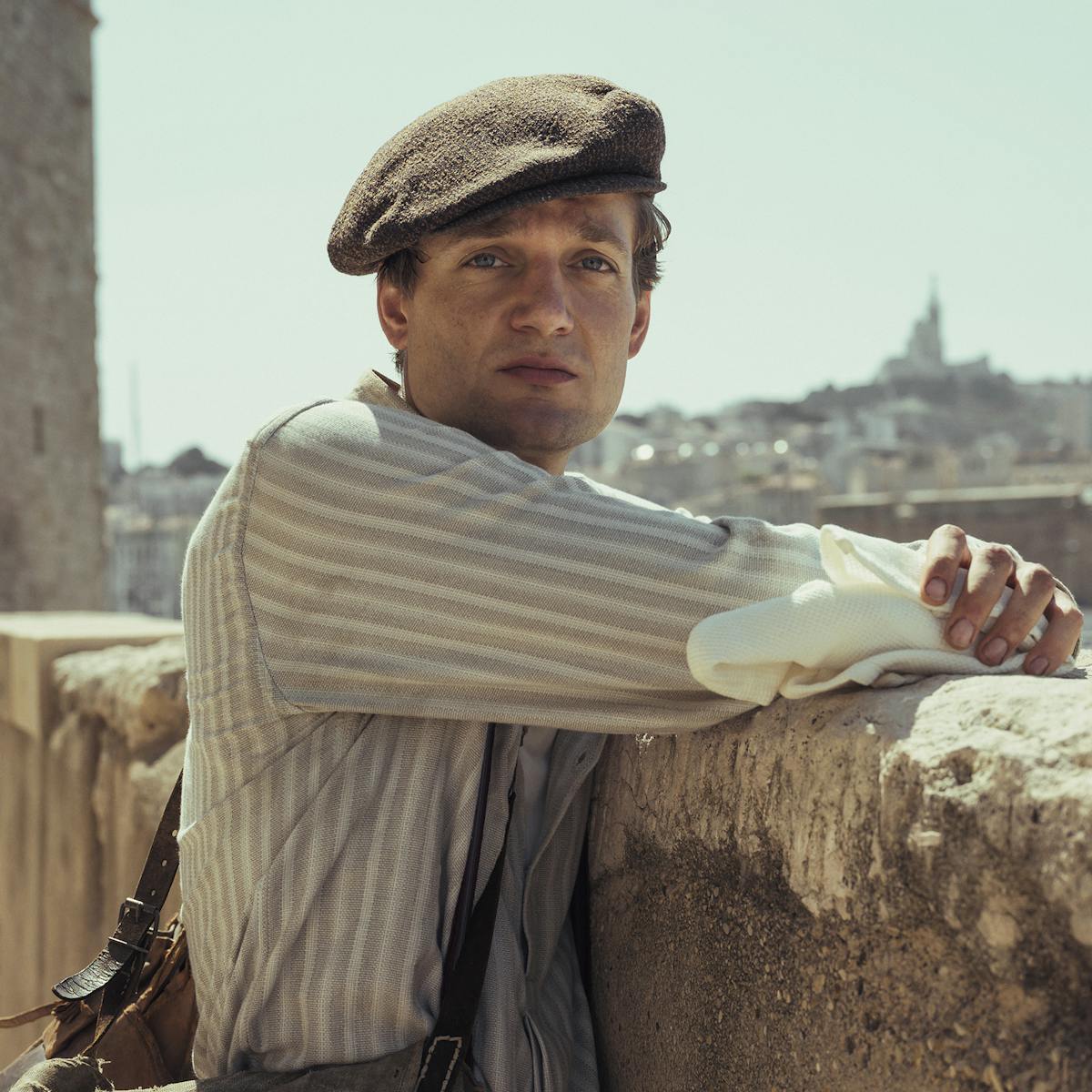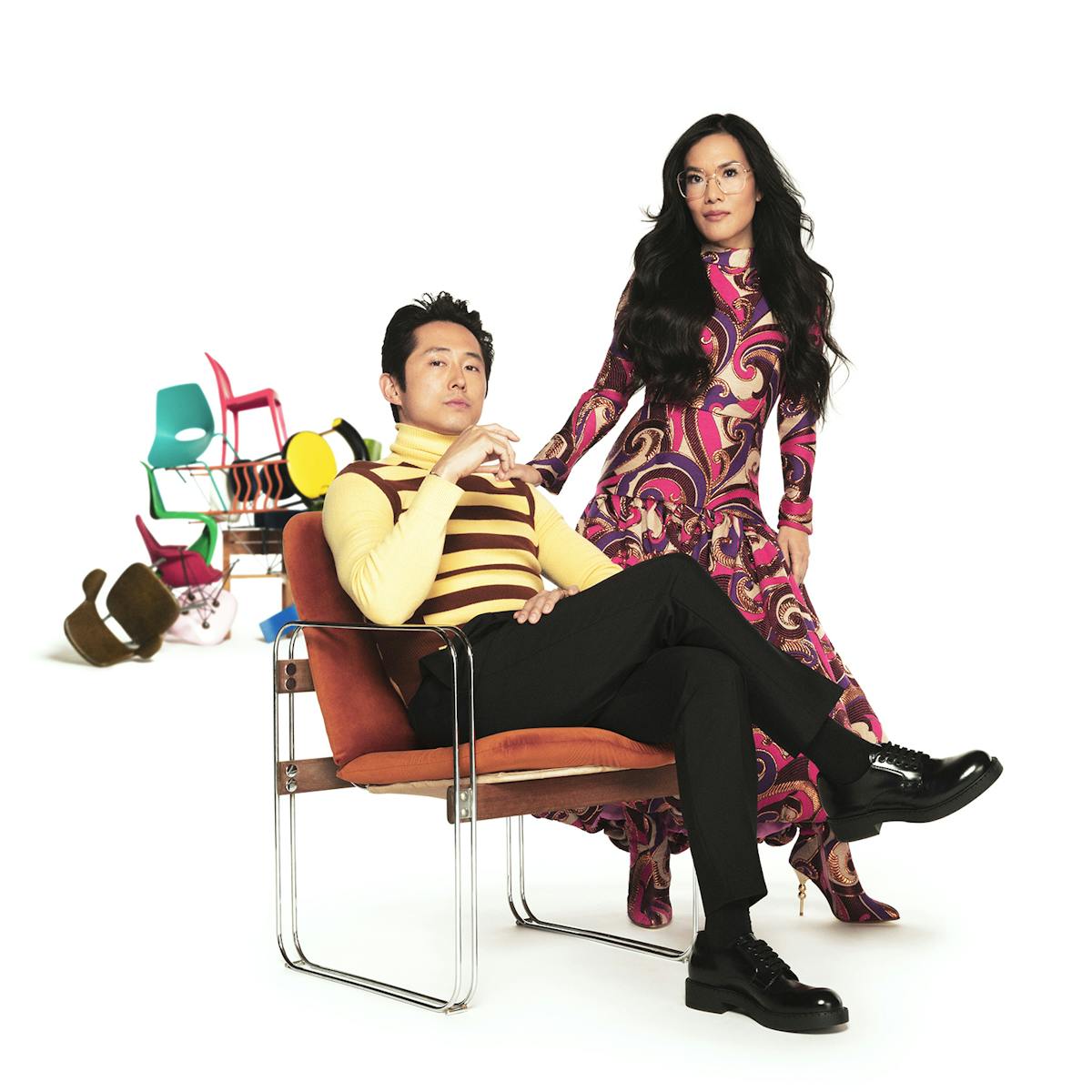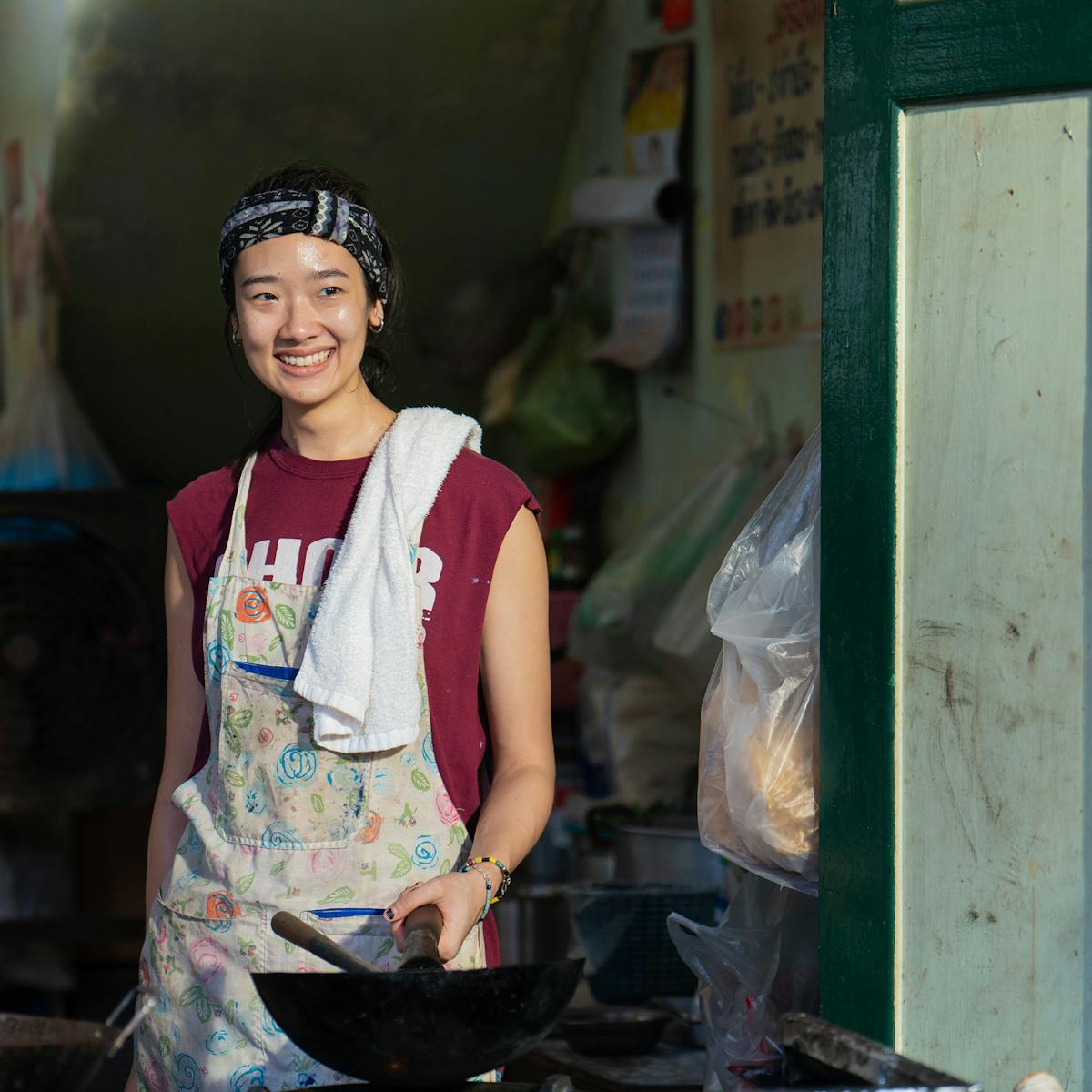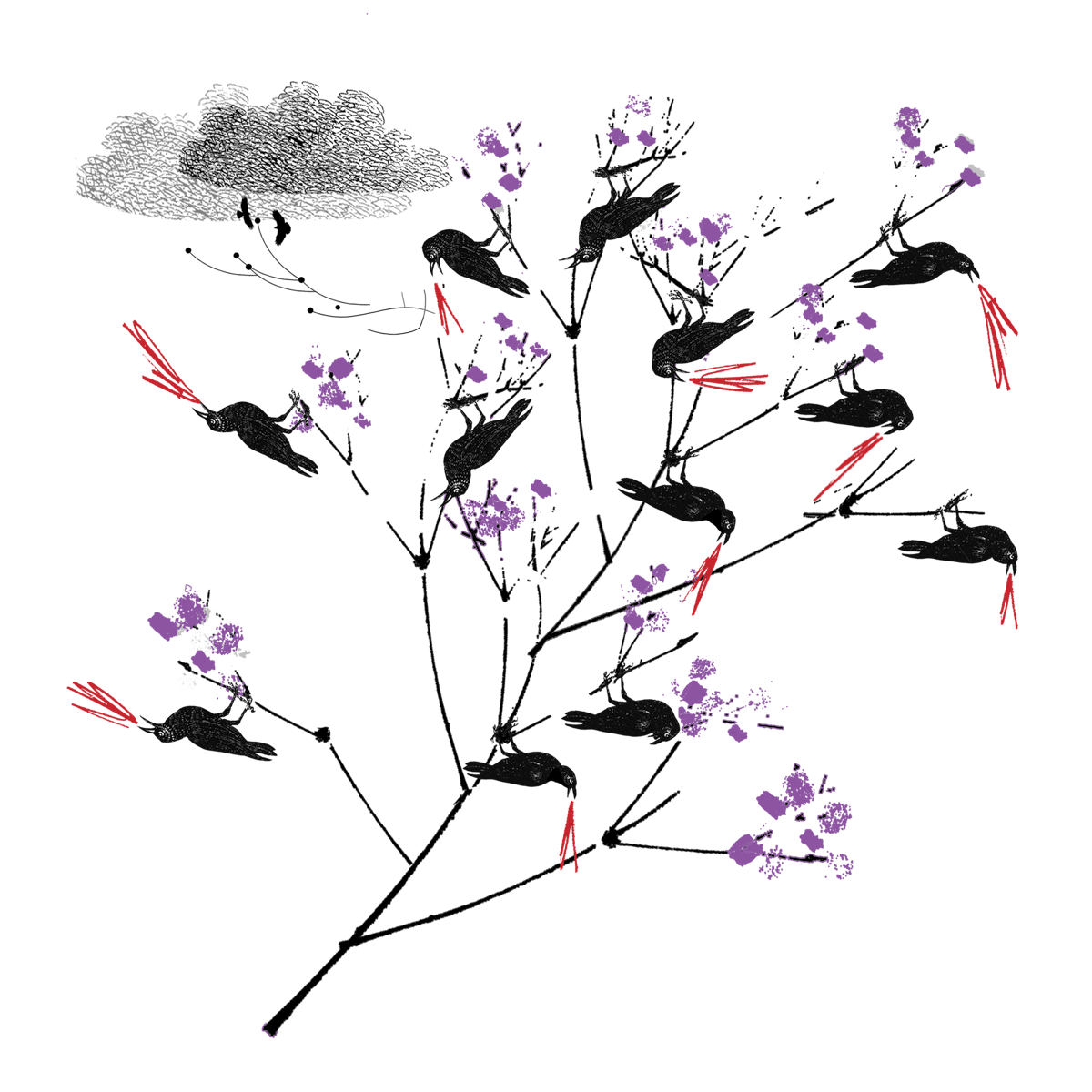The decade-long friends bring their fascination with Varian Fry to the screen.
In late summer of 2019, Anna Winger, the creator of Unorthodox, and Julie Orringer, the author of The Flight Portfolio, caught up with one another in Blue Hill, Maine. They had met years earlier through friends in Brooklyn, but lived on different continents — Orringer in New York and Winger in Berlin, Germany — and hadn’t seen each other in years. On this August day, they bonded over a shared obsession with the little-known history of Varian Fry, an American journalist who moved to Marseille, France for 13 months in 1940-1941, on a mission to save Europe’s greatest artists and intellectuals from the Nazis.
“I like to say it’s the greatest story never told,” says Winger, who co-created, wrote, and produced Transatlantic, the historically-based seven-episode series about Fry (Cory Michael Smith) and his Emergency Rescue Committee, which included Chicago heiress Mary Jayne Gold (Gillian Jacobs), German academic-turned-activist Albert Hirschman (Lucas Englander), and renegade Lisa Fittko (Deleila Piasko). Over the course of a little more than a year, Fry and his colleagues were responsible for saving the lives of 2,000 people, among them Marc Chagall, Max Ernst, Hannah Arendt, and André Breton.
Winger first heard about Fry and his mission back in 2012. She was walking in Berlin with her father, the anthropologist Robert LeVine, when they passed a small sign marking “Varian Fry Strasse” near Potsdamer Platz. Her father had heard the story of Fry firsthand: He had met Hirschman, by then an influential economist, while they were both teaching at Harvard in the 1970s. And he had protested the Vietnam War alongside Lisa Fittko, Fry’s colleague who forged a path over the Pyrenees Mountains, the so-called “F Route,” where refugees could be taken to the relative safety of Spain before making their way across the Atlantic.
A few years later, in 2015, when one million asylum-seekers from Syria and Afghanistan moved to Germany, Winger was reminded of the stories her father had shared years earlier. As a Jewish American woman living in Berlin, she analyzed her connection to the new residents of the country. “People like us once had to leave and now people from another conflict were coming here for refuge,” she says. “There was something tragic and beautiful about it. It’s like that Mark Twain quote, ‘History doesn’t repeat itself, but it often rhymes.’”
At that point, she started reading everything she could find on Fry and his Emergency Rescue Committee. She listened to Shoah Foundation oral history recordings about those who crossed the Pyrenees on the F route. She read about the Hotel Splendide, where Fry worked and hid refugees, and pored over accounts of the Villa Air-Bel, the Marseilles mansion that housed a who’s-who of Surrealist artists before they could safely leave wartime France. “Because almost everyone involved was a writer or an artist themself, there is a wealth of novels and short stories and plays and paintings and memoirs and biographies that touch on the story,” she says. Then, while she was in production on Unorthodox in 2019, she read one more book: Orringer’s The Flight Portfolio.
In The Flight Portfolio, Orringer tells a fictionalized tale about Fry, his colleagues, and those he rescued. The historical players like Gold, Hirschman, Chagall, and Max Ernst are all involved, but Orringer imagines more of the inner lives of the characters. In the novel, Fry has a former (and then not former) lover who turns up in Marseille. “I wanted to represent accurately the work Varian did, the people he saved, how he got them out, how he managed to get money, fake exit visas, and the kinds of connections he needed to make all those parts work and operate in the service of those 2,000-plus people who he saved,” Orringer says. “But there were the adjuncts to all that is known that were unknowable — his inner life.”
Like Winger, Orringer spent years researching Fry, spending hours with his personal writings at the Columbia University archives, looking at his student record from his time at Harvard, reading the memoirs and other writings of people who knew him like Gold and the legendary literature professor Justus Rosenberg, who, as a young boy, worked as a courier for Fry. “The idea was to augment the known historical facts with a kind of deeper emotional portrait of this human being.”
It was enough to remind any of us that our relationships with one another, across borders, are essential. Yes, Transatlantic is a World War II story, but it’s also a story about the ways in which friendship, romance, creativity, and collaboration provide light in the darkness, reminding us that we are alive.
Anna Winger
When Winger read Orringer’s novel, she found the heart to balance the history. So she reached out to option the rights. “[The Flight Portfolio] provided a lot of psychological insight to explain Varian’s sense of purpose,” Winger says. “[Orringer]’s such a sensitive person and she had done so much research. There was a bibliography in the back!” Orringer recalls an early phone conversation with Winger before they met to seal the deal in Maine. “She said she’d read the book and felt like she could see the emotional throughline that was missing in the way she’d been thinking of the narrative previously.”
Writing scripts with a writers’ room over Zoom during the pandemic, Winger’s team drew from historical research and from Orringer’s flourishes. They came up with a new love interest for Fry: Thomas Lovegrove (played by her Unorthodox star Amit Rahav), a kibbutz-born activist. They invented African resistance fighter Paul Kanjo (played by Ralph Amoussou), aiming to illuminate stories at the edges of the traditional World War II narrative. Drawing parallels to the present, the series became a celebration of a community that comes together in a crisis.

Anna Winger and Cory Michael Smith
Because of quarantine laws and ever-emerging COVID variants, Winger and Orringer didn’t sit to discuss Transatlantic’s development face-to-face, until late summer 2021 when Winger was about to go into pre-production and Orringer read the scripts for the first time. In addition to changing the title, the series would be quite different from the novel but the two writers quickly saw eye to eye. “I have vast respect for Anna’s storytelling,” Orringer says. “It was incredible to see this material in the hands of somebody who has such a profoundly exquisite narrative sense but also a visual sense because she was trained as a photographer. She brings a kind of scene imagining to the different landscapes of the novel. I’m a person who likes to play a film of a scene in my mind as I’m writing it so to see those visions conjoined was truly thrilling.”
Orringer was able to see those visions come to life first-hand when she visited Winger for eight days on set in France. “The scene that stood out the most was when you see Lisa Fittko leading a group of refugees including Walter Benjamin [played by Moritz Bleibtreu] across the border. We drove to a location an hour and a half outside Marseille in the hills of Provence, and they were walking through these long verdant rows of grapes.”
By the time Orringer and Winger were on set in those French vineyards, a new European war had broken out only a few countries eastwards, in Ukraine — a rhyme in history, as Twain would say, not lost on either of them. “This is a show about one refugee crisis that was inspired by another, that we ended up shooting against the background of a third,” Winger says. “It was enough to remind any of us that our relationships with one another, across borders, are essential. Yes, Transatlantic is a World War II story, but it’s also a story about the ways in which friendship, romance, creativity, and collaboration provide light in the darkness, reminding us that we are alive.”
